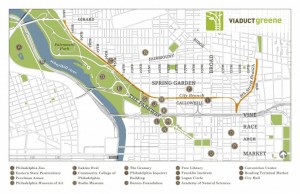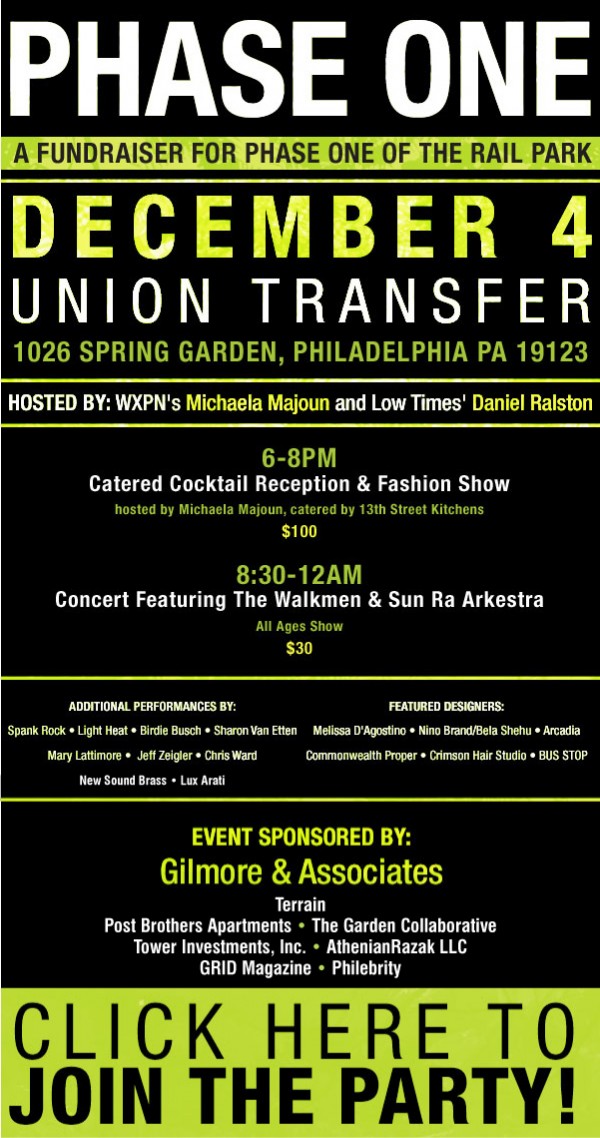Hosted by WXPN’s Michaela Majoun, this exclusive reception will present a fashion show curated by Melissa D’Agostino featuring Arcadia, , Commonwealth Proper, NINObrand by Bela Sheu and Bus Stop Boutique. Following the fashion show, guests will delight in an eclectic program of live entertainment featuring The Walkmen and Sun Ra Arketstra, large-scale video projections, and more. Catering by 13th Street Kitchens of Café Lift, Prohibition Taproom and Bufad. Ticket valid for the entire event, reception +concert. MORE
PREVIOUSLY: In a post-industrial neighborhood that inspired one of the strangest movies put to celluloid, a plan is afoot to transform its gloomiest ruin into a walkable elevated oasis. City officials and neighborhood supporters are preparing designs and raising money to clean and green a three-block branch of the mile-long Reading Viaduct, an abandoned railway that moved commuters and goods from 1893 to 1984, in an area nicknamed “the eraserhood.” The tongue-in-cheek compliment is a reference to the 1977 film “Eraserhead,” whose creator, David Lynch, lived within the grim patchwork of crumbling factories and vacant warehouses as an art student in the 1960s and  called it his muse for the movie’s bleak and bizarre urban wasteland.
called it his muse for the movie’s bleak and bizarre urban wasteland.
Over the ensuing decades, empty buildings have been built into loft apartments and artists’ studios but large plots remain stubbornly isolated. Turning the eyesore into an inviting greenway will attract people, development and business, say members of the Reading Viaduct Project. “This can be a park that not only benefits the neighborhood but the whole city,” said Sarah McEneaney, a painter who since 1979 has lived in this six-block-wide community dubbed the Loft District by real estate agents and officially known as Callowhill. With bustling Chinatown to its south and hipster hangout Northern Liberties to the north, parts of the neighborhood feel like a no-man’s land. Inspired by similar efforts in New York City, McEneaney and fellow neighborhood resident John Struble created the nonprofit Reading Viaduct Project in 2003 and began promoting the elevated park idea. Their efforts picked up steam after the High Line, an old rail bed on Manhattan’s west side remade into an elevated park, opened to kudos and crowds in 2009. MORE

